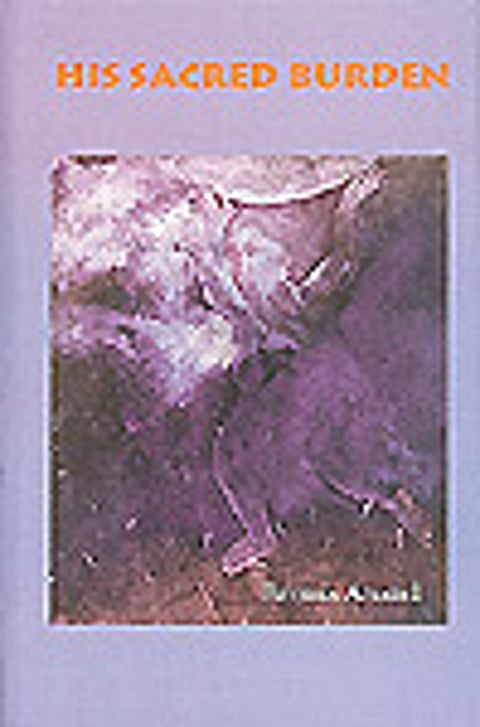His Sacred Burden by Reema Anand Ajanta Books International Rs : 395;Pages :152 |
Bearded Mother Teresa
Belated biographies on a man who defied easy categories


Garland Around My Neck :The Story Of Puran Singh Of Pingalwara by Patwant Singh and Harinder Kaur Sekhon UBSPD Rs:495; Pages : 173 |
This story returns to mind after reading the two biographies on Bhagat Puran Singh ofPingalwara who Khushwant Singh once described as the 'Bearded Mother Teresa'. Ina catastrophe so absurd and inhuman when a father could choose to risk the life and fateof his daughter to save a radio, this man, who was to make a home for the sick and ailingat Pingalwara in Amritsar, came across the border carrying a very sacred burdenindeed—a full-grown adult crippled in the body and mind. Indeed, it was His SacredBurden, which is the title of his biography by Reema Anand, published this year byAjanta Publications. It was followed a couple of months later by yet another volumetelling the story of Puran Singh of Pingalwara called Garland Around my Neck, written byPatwant Singh and Harinder Kaur Sekhon and brought out by ubs Publishers.
It's a story worth telling and one wonders why it took so long for biographers tocome forward. For Puran Singh was a living legend known for his unique spirit of servicewhile Pingalwara is a household name to which nearly every Punjabi family has contributeda mite even from the most meagre of savings. Puran Singh died at the age of 88 in 1992.Alive, he was too simple, too down-to-earth, too giving and too available a man to anyonewho needed him. Perhaps it made an assessment of so 'living' a person difficultwithin his lifetime. While appreciating his amazing achievements, many thought of him asan eccentric or even a 'crackpot' as Khushwant again fondly describes him in hisintroduction to Reema Anand's book. Maybe it takes a 'crackpot' of akind—the word could be substituted with dreamer or visionary—to set upimpossible goals and actually achieve them. He made no claims on sainthood either, for hechose the prefix of 'Bhagat' or devotee. For someone like him, service was thereward. He could escape the trappings of sainthood and at the same time evade epithets ofthe 'man of the millennium' kind. This again made him a tough subject forbiographers for they did not know where to slot a person like him.
Patwant and Sekhon seek to trace Puran Singh's concern and compassion for thewretched of the earth in the religious traditions of Buddhism and Sikhism and then beginon the note of 'Not so long ago after the dawn of the last century. ...' Reemagoes straight to the year of the plague, 1904, when Puran Singh was born. Thecircumstances of his birth are important for they, in a way, decided his path. He was bornout of wedlock to Mehtab Kaur, a Jat Sikh child widow, who was taken on as a second womanby one Chaudhuri Chhibu Mal, a prosperous Hindu money-lender. The Chaudhuri was smitten byMehtab's beauty but forbade her to have children so that his property would remainwith the children of his wife. Three abortions later, Mehtab begged to retain the fourthchild promising that he would claim no share.
True to her word, Mehtab inculcated in her child the spirit of service, which forms thebasis of the Sikh religious tradition. A school dropout, Puran was happier studying in thelibrary of the gurudwara, cleaning the streets and caring for the sick. At the age of 20in 1934, he found the abandoned cripple, Piara Singh, whom he carried around on his backfor many years to come including the year of the Partition when he migrated from Pakistan.Amritsar with the Golden Temple became his home and it was here that he collected theailing and the destitute who were to become the inmates of his home in Pingalwara. Todaythe institution houses some 800 inmates.
These two books in their own way come as tributes to Puran Singh as also the spirit ofhis service. While Patwant and Sekhon's is a well-researched volume which makes forbetter reading along with some excellent photographs, Reema's book too has the rawcharm of a chronicler in complete awe of the subject. Both books carry the writings ofPuran Singh who himself wrote compulsively and brought out newsletters on various subjectsfrom a press installed at Pingalwara; these are eloquent in their sincerity. "He wasmy inspiration!" This was what Sunder Lal Bahuguna had said of Puran Singh. The storyof Puran Singh of Pingalwara is bound to inspire many more.
Tags